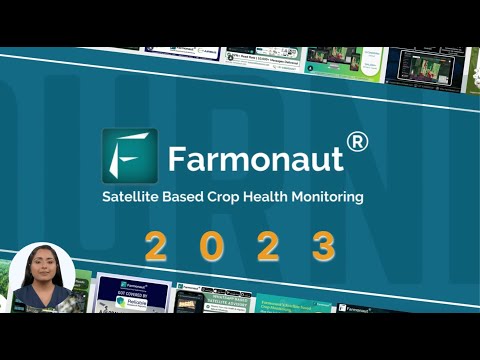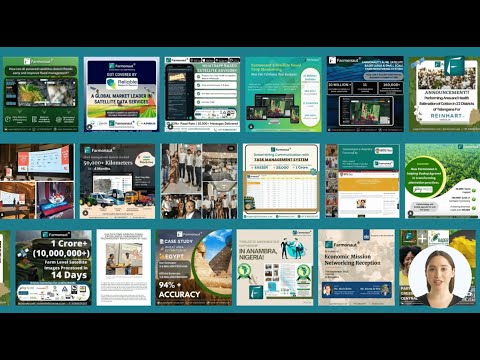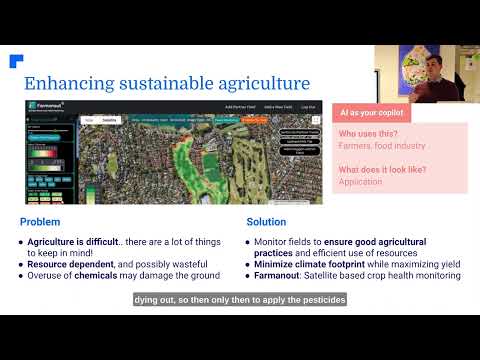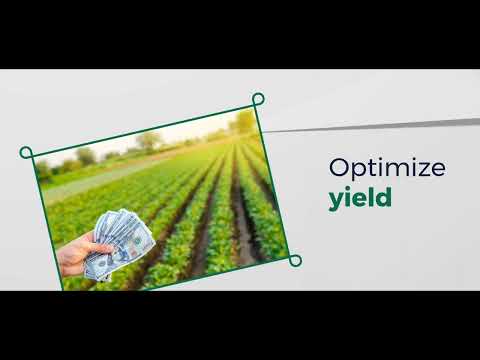Nevada Food Banks Face Crisis: USDA Cuts Threaten Local Food Assistance Programs Amid Rising Insecurity
“Nevada food banks have seen a 76% increase in demand since the pandemic began.”
“USDA funding cuts of over $8 million threaten food assistance programs in Nevada, impacting local purchasing and distribution efforts.”
In the heart of the Silver State, a crisis is unfolding that threatens the very fabric of our community’s well-being. Nevada food banks are grappling with unprecedented challenges as recent funding cuts by the U.S. Department of Agriculture (USDA) cast a long shadow over local food assistance programs. These cuts come at a time when food insecurity is on the rise, leaving many families in our region struggling to put meals on the table. Today, we’ll delve deep into this pressing issue, exploring its far-reaching implications and the potential solutions that could help alleviate this growing concern.
The Ripple Effect of USDA Funding Cuts
The decision by the Trump Administration and the USDA to slash over $8 million in funding has sent shockwaves through Nevada’s food assistance network. This substantial reduction directly impacts crucial programs that have been a lifeline for countless families across our state. The Food Bank of Northern Nevada, a cornerstone in our community’s fight against hunger, is feeling the brunt of these cuts.
Jocelyn Lantrip, the Marketing Director for the Food Bank of Northern Nevada, puts the situation into perspective: “We really do support families who are facing hunger or experiencing food insecurity every day. We are helping 160,000 people every single month. What I can tell you is that number is 76% higher than it was before the pandemic.”

Key Programs Terminated
Two major programs have fallen victim to these budget cuts:
- The Local Food Assistance Purchase Cooperative Agreement Program: This initiative allocated $3.9 million in funds to Nevada, with the Food Bank of Northern Nevada anticipating the purchase of 1.1 million pounds of food.
- The Home Feeds Nevada program: This program played a crucial role in securing protein, dairy products, and eggs – items that are notoriously difficult to obtain through donations.
The termination of these programs doesn’t just mean less food on the shelves. It represents a significant blow to local farmers and food producers who relied on these initiatives to sustain their businesses. The ripple effect extends beyond food security, touching the very heart of our local agricultural economy.
The Scale of the Impact
To truly grasp the magnitude of these cuts, let’s look at the numbers:
- Nearly 1.1 million pounds of food deliveries have been canceled – enough to feed 16,000 to 25,000 families of four.
- The Food Bank of Northern Nevada has seen about 2.1 million pounds from the Commodity Credit Corporation funding program this year alone.
- Approximately 350,000 pounds of expected food orders were canceled.
- In 2024, the Food Bank distributed a staggering 25 million pounds of food.
- The recent cancellations account for more than 12% of its expected annual food budget.
These statistics paint a grim picture of the challenges facing our food banks and the communities they serve. The sudden loss of such a significant portion of their food supply threatens their ability to keep pace with the growing demand for assistance.
Rising Food Insecurity: A Growing Concern
The timing of these cuts couldn’t be worse. Since the onset of the pandemic, Nevada has witnessed a 76% increase in demand for food assistance. This surge in need reflects the economic hardships many families are facing, with job losses, reduced work hours, and increased living costs pushing more people towards food insecurity.
Food insecurity isn’t just about empty stomachs; it’s a complex issue with far-reaching consequences. It affects children’s ability to learn, adults’ productivity at work, and the overall health and well-being of our communities. As we grapple with these funding cuts, we must also confront the broader implications for Nevada’s social and economic fabric.
The Struggle for Essential Nutrients
One of the most challenging aspects of these cuts is the impact on the supply of essential nutrients. Protein, dairy products, and eggs are crucial components of a balanced diet, yet they are among the hardest items for food banks to secure through donations. The termination of programs specifically designed to provide these nutrient-dense foods leaves a significant gap in the nutritional support offered to families in need.
This nutritional deficit could have long-term health implications for those relying on food assistance. Adequate protein intake is essential for growth and development in children, while dairy products provide necessary calcium and vitamins. Without these key components, we risk seeing an increase in nutritional deficiencies and related health issues among our most vulnerable populations.
Impact on Local Farmers and Producers
The Local Food Assistance Purchase Cooperative Agreement Program wasn’t just about feeding the hungry; it was a lifeline for local farmers and food producers. As Lantrip explains, “The thing that is great about that particular program, is that the Department of Agriculture is buying food from local farmers and local food producers here in Nevada.”
By cutting this program, we’re not only reducing the food supply for those in need but also removing a vital source of income for our local agricultural community. This double-edged impact threatens both food security and the economic stability of our rural areas.
In times like these, innovative solutions in agriculture become even more crucial. Technologies that can help farmers optimize their yields and reduce costs could play a significant role in mitigating some of these challenges. For instance, Farmonaut’s crop plantation and forest advisory services offer valuable insights that could help local farmers maximize their production efficiency, potentially offsetting some of the losses from reduced government purchases.

The Role of Community Support
In the face of these daunting challenges, community support becomes more critical than ever. Lantrip acknowledges the vital role that community donations play: “We know we are going to be asking for more food and funds to help us keep up with this demand. They always come through, so I would like to say thank you.”
This call to action underscores the importance of collective effort in addressing food insecurity. While government funding plays a crucial role, the power of community solidarity cannot be underestimated. Local businesses, individuals, and organizations all have a part to play in filling the gap left by these budget cuts.
Innovative Solutions and Partnerships
As we navigate these challenging times, it’s crucial to explore innovative solutions and partnerships that can help alleviate the strain on our food banks. Here are some potential avenues:
- Technology-Driven Efficiency: Implementing advanced logistics and inventory management systems can help food banks optimize their operations and stretch their resources further. Fleet management solutions, like those offered by Farmonaut, could be adapted to improve the efficiency of food distribution networks.
- Corporate Partnerships: Engaging local businesses in food donation programs or sponsorship initiatives can provide a steady stream of support for food banks.
- Community Gardens: Promoting and supporting community gardens can help supplement food supplies while also fostering a sense of community and self-sufficiency.
- Education Programs: Offering nutrition education and cooking classes can help families make the most of the food resources available to them.
- Sustainable Agriculture Initiatives: Supporting local farmers in adopting sustainable and efficient farming practices can help increase food production. Tools like carbon footprinting services can aid in developing more environmentally friendly and cost-effective farming methods.
The Importance of Advocacy
While community support is crucial, addressing the root cause of these funding cuts requires sustained advocacy efforts. Engaging with local and state representatives, participating in community forums, and raising awareness about the impact of these cuts are all important steps in pushing for policy changes.
We must make our voices heard to ensure that food assistance programs receive the funding and support they need to serve our communities effectively. This advocacy is not just about restoring lost funding; it’s about building a more resilient and equitable food system for the future.
Looking to the Future
As we confront this crisis, it’s important to consider long-term solutions that can help build a more resilient food assistance network. This may involve:
- Diversifying Funding Sources: Exploring a mix of public and private funding to reduce dependence on any single source.
- Strengthening Local Food Systems: Investing in local agriculture and food production to create a more sustainable and resilient food supply chain.
- Leveraging Technology: Utilizing data analytics and predictive modeling to better anticipate and respond to food insecurity trends. Crop loan and insurance services powered by satellite technology could play a role in stabilizing local food production.
- Collaborative Networks: Building stronger partnerships between food banks, local farmers, retailers, and community organizations to create a more integrated approach to food assistance.
The crisis facing Nevada’s food banks is a wake-up call for our community. It highlights the fragility of our food assistance systems and the urgent need for sustainable, long-term solutions. As we rally to support our local food banks and the families they serve, we must also push for policy changes and innovative approaches that can help build a more food-secure future for all Nevadans.
The Role of Technology in Addressing Food Insecurity
In our increasingly digital world, technology has a crucial role to play in addressing food insecurity and supporting our food banks. Innovative solutions can help streamline operations, improve efficiency, and ultimately get more food to those who need it most. Here are some ways technology is making a difference:
- Supply Chain Optimization: Advanced logistics software can help food banks track inventory, plan distribution routes, and reduce waste. This ensures that food reaches recipients quickly and efficiently.
- Data Analytics: By analyzing patterns in food demand and supply, food banks can better predict needs and allocate resources accordingly. This proactive approach can help prevent shortages and ensure a steady supply of essential items.
- Mobile Apps: Smartphone applications can connect donors with food banks, making it easier for individuals and businesses to contribute. These apps can also help those in need locate nearby food distribution points.
- Blockchain for Transparency: Blockchain-based traceability solutions can enhance transparency in food supply chains, ensuring that donations are used effectively and reducing the risk of fraud.
- Precision Agriculture: Technologies that help farmers increase yields and reduce costs can indirectly support food banks by increasing the overall food supply and potentially lowering prices.
The Impact on Vulnerable Populations
While the funding cuts affect the entire community, certain groups are particularly vulnerable to increased food insecurity:
- Children: Proper nutrition is crucial for children’s growth and development. Reduced access to nutritious food can have long-lasting effects on their health and educational outcomes.
- Elderly: Many seniors on fixed incomes rely on food assistance programs. The cuts could significantly impact their ability to maintain a healthy diet.
- Low-income Families: Families already struggling to make ends meet may be forced to make difficult choices between food and other essential expenses.
- Rural Communities: With fewer resources and greater distances to travel, rural areas may face unique challenges in maintaining food assistance programs.
Addressing the needs of these vulnerable populations requires targeted strategies and community-wide support. It’s not just about providing food, but ensuring that the most at-risk members of our community have access to nutritious meals that support their health and well-being.
Building Resilience in Our Food Systems
The current crisis highlights the need for more resilient and sustainable food systems in Nevada. Here are some strategies that could help build a stronger foundation for food security:
- Diversifying Food Sources: Reducing reliance on any single source of food or funding can help buffer against future shocks.
- Supporting Urban Agriculture: Encouraging community gardens and urban farming initiatives can supplement food bank supplies and promote food independence.
- Enhancing Food Education: Teaching cooking skills, nutrition, and food budgeting can help families make the most of available resources.
- Promoting Sustainable Farming: Supporting local farmers in adopting sustainable practices can increase food production while reducing environmental impact.
- Developing Food Recovery Programs: Implementing systems to rescue excess food from restaurants and retailers can significantly boost food bank supplies.
By focusing on these areas, we can work towards a future where our communities are better equipped to handle challenges to food security.
The Crucial Role of Community Engagement
In times of crisis, the power of community cannot be overstated. Here are ways individuals and organizations can make a difference:
- Volunteer: Food banks rely heavily on volunteer support. Offering your time can help stretch limited resources further.
- Donate: Financial donations allow food banks to purchase needed items in bulk at discounted rates.
- Advocate: Speak out about the importance of food assistance programs to local and state representatives.
- Organize Food Drives: Community-led food drives can help stock food bank shelves during critical times.
- Support Local Farmers: Buying from local farmers helps strengthen the local food system and economy.
Every action, no matter how small, contributes to the larger effort of ensuring food security for all Nevadans.
Looking Ahead: A Call to Action
The challenges facing Nevada’s food banks are significant, but they are not insurmountable. By coming together as a community, leveraging innovative solutions, and advocating for sustainable policies, we can work towards a future where no one in our state goes hungry.
As we move forward, let’s remember that food security is not just about filling empty stomachs; it’s about nourishing our communities, supporting our local economies, and building a resilient foundation for future generations. The crisis we face today is an opportunity to reimagine and rebuild our food assistance systems in ways that are more equitable, efficient, and sustainable.
We call on all Nevadans to join in this crucial effort. Whether through donations, volunteering, advocacy, or supporting local food producers, every action counts. Together, we can ensure that our food banks have the resources they need to continue their vital work, and that no member of our community is left behind in the face of hunger.
Impact of USDA Funding Cuts on Nevada Food Banks
| Aspect | Before Cuts | After Cuts |
|---|---|---|
| Annual Funding (USD) | $X million | $(X-8) million |
| Number of Meals Provided Monthly | 480,000 | 270,000 |
| Local Farmers Supported | 150 | 85 |
| Protein Supply (lbs/month) | 100,000 | 60,000 |
| Dairy Supply (gallons/month) | 50,000 | 30,000 |
| Eggs Supply (dozens/month) | 25,000 | 15,000 |
FAQs
- How much funding has been cut from Nevada’s food assistance programs?
Over $8 million in funding has been cut from Nevada’s food assistance programs by the USDA. - How has the demand for food assistance changed since the pandemic?
Nevada food banks have seen a 76% increase in demand since the pandemic began. - What specific programs have been terminated?
The Local Food Assistance Purchase Cooperative Agreement Program and the Home Feeds Nevada program have been terminated. - How many people does the Food Bank of Northern Nevada serve monthly?
The Food Bank of Northern Nevada serves 160,000 people every month. - What types of food are particularly difficult for food banks to obtain through donations?
Protein, dairy products, and eggs are especially challenging for food banks to secure through donations. - How much food was expected to be purchased through the terminated programs?
The Food Bank of Northern Nevada anticipated purchasing 1.1 million pounds of food through these programs. - How do these cuts affect local farmers and food producers?
The cuts remove a vital source of income for local farmers and food producers who were supplying food through these programs. - What percentage of the Food Bank’s expected annual food budget has been affected?
More than 12% of the Food Bank’s expected annual food budget has been impacted by these cuts. - How can community members help support food banks during this crisis?
Community members can help by donating food or funds, volunteering, and advocating for food assistance programs. - Are there any immediate solutions proposed to address this funding gap?
While no immediate solutions have been provided by the White House, food banks are relying heavily on community support and exploring innovative partnerships to maintain their services.
Earn With Farmonaut: Earn 20% recurring commission with Farmonaut’s affiliate program by sharing your promo code and helping farmers save 10%. Onboard 10 Elite farmers monthly to earn a minimum of $148,000 annually—start now and grow your income!
Learn More About Farmonaut’s Affiliate Program
Conclusion
The crisis facing Nevada’s food banks is a stark reminder of the fragility of our food assistance systems and the critical importance of sustained support for these vital community resources. As we navigate these challenging times, it’s clear that a multi-faceted approach involving government action, community support, and innovative solutions is needed to address the growing food insecurity in our state.
While the immediate impacts of the USDA funding cuts are severe, they also present an opportunity for our community to come together, reimagine our approach to food assistance, and build more resilient systems for the future. By leveraging technology, strengthening local food networks, and fostering a spirit of community engagement, we can work towards a Nevada where no one goes hungry.
Let us move forward with determination, compassion, and innovation, ensuring that our food banks have the resources they need to continue their crucial work. Together, we can build a stronger, more food-secure future for all Nevadans.
For more information on Farmonaut’s API and developer resources, visit our API page and API Developer Docs.







